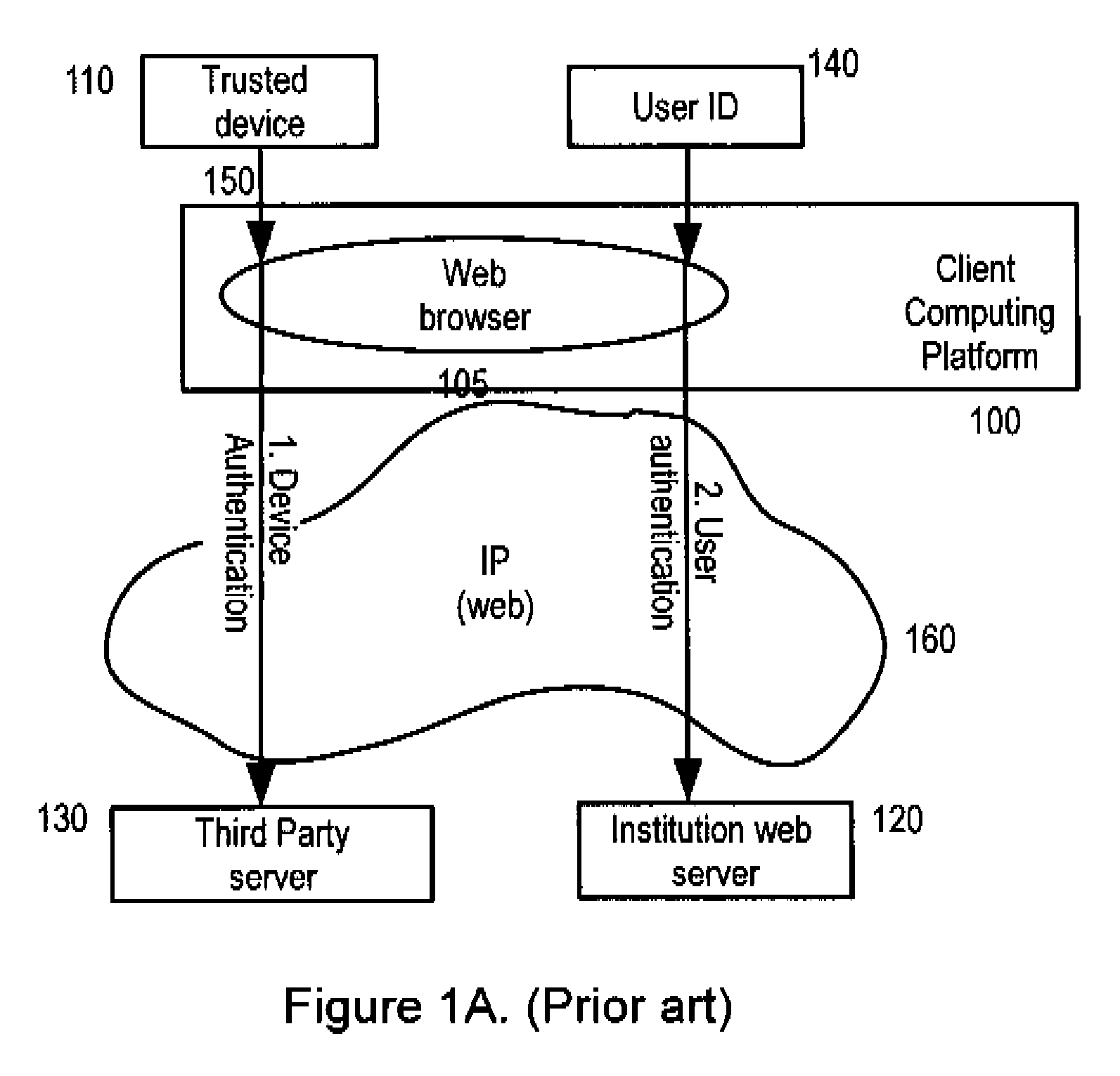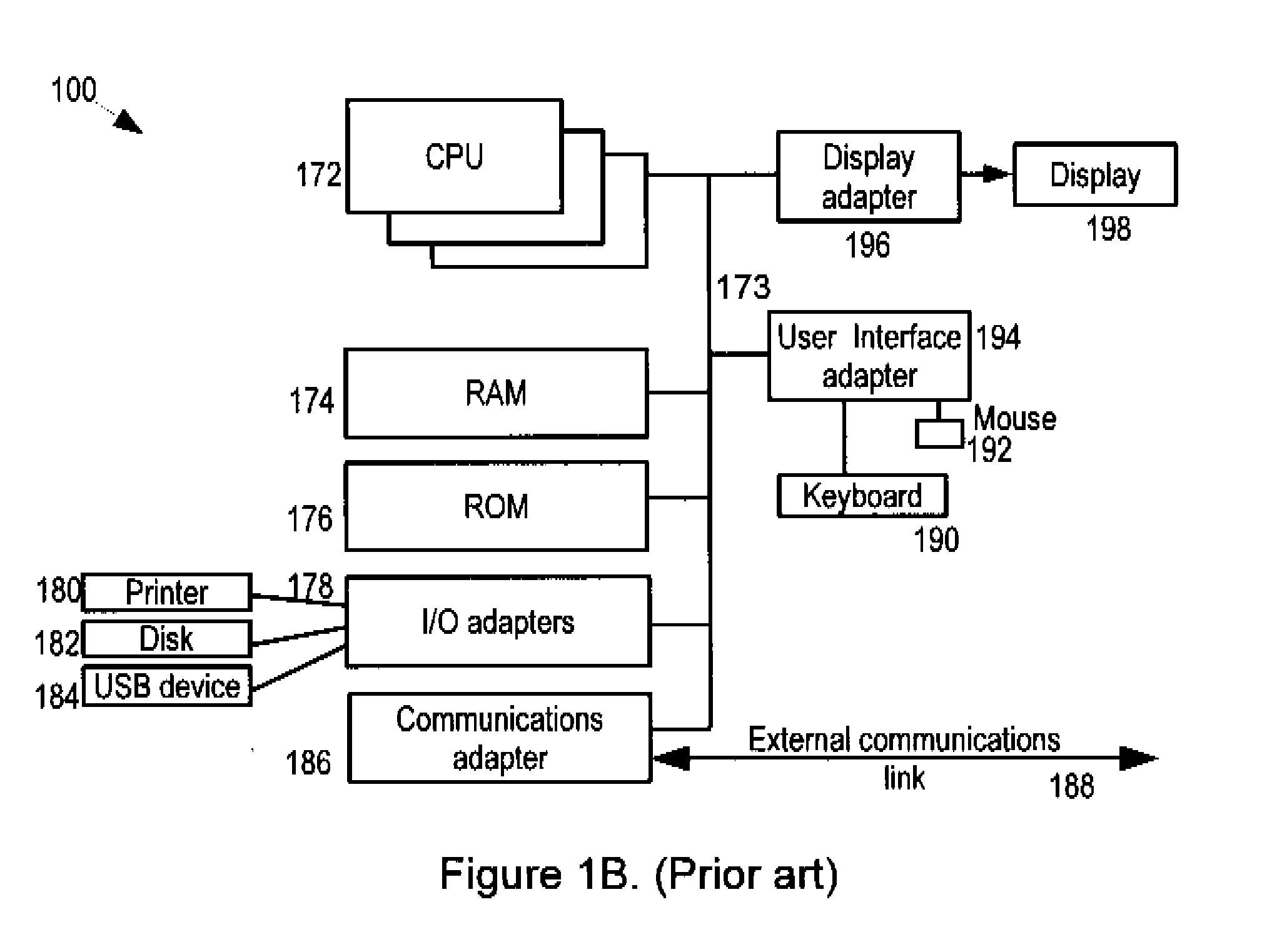Network transaction verification and authentication
a network transaction and verification technology, applied in the field of network security systems, can solve the problems of increased risk to institutions and customers, insufficient one-factor authentication to protect users or institutions from malicious software or malware attacks, and difficulty in preventing and disinfecting mitb attacks, so as to improve the quality of authentication and verification services
- Summary
- Abstract
- Description
- Claims
- Application Information
AI Technical Summary
Benefits of technology
Problems solved by technology
Method used
Image
Examples
Embodiment Construction
[0025]Earlier systems, illustrated by FIG. 1A, typically comprise a client computing platform or device 100, containing software, including a web browser 105, to permit communication with an institution web server 120, maintained by an ‘on-line service institution’, sometimes referred to simply as ‘institution’. An institution may include online institutions that require secure, authenticated and trusted communication between the institution and its users. These institutions may include for example a bank, health care provider, or other site with sensitive or personal; information. The browser 106 is also able to communicate with a third party web server 130, capable of authenticating a physical token 110 which is connectable to the client computing platform 100 over a local communications link 150. It will be appreciated that the physical token 110 does not need to be connectable to the client computing platform 100. Instead the authentication information of the physical token 110 ...
PUM
 Login to View More
Login to View More Abstract
Description
Claims
Application Information
 Login to View More
Login to View More - R&D
- Intellectual Property
- Life Sciences
- Materials
- Tech Scout
- Unparalleled Data Quality
- Higher Quality Content
- 60% Fewer Hallucinations
Browse by: Latest US Patents, China's latest patents, Technical Efficacy Thesaurus, Application Domain, Technology Topic, Popular Technical Reports.
© 2025 PatSnap. All rights reserved.Legal|Privacy policy|Modern Slavery Act Transparency Statement|Sitemap|About US| Contact US: help@patsnap.com



